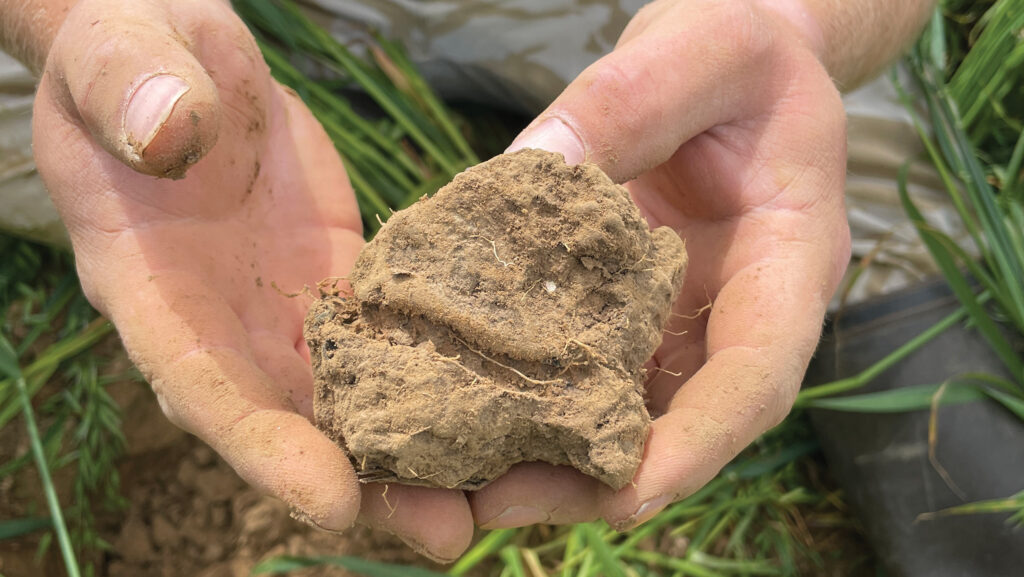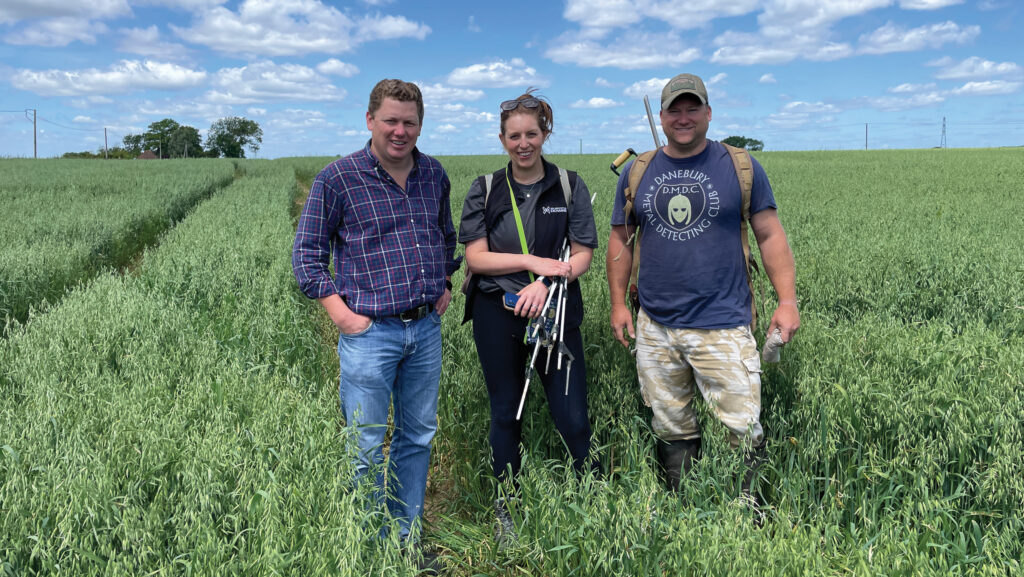How a sustainability scoring system is helping Kent farm
 © Soil Association
© Soil Association Knowing how the farm is performing across six different environmental impact areas is important for Kent grower Alan Clifton-Holt, who wants to make the most of any new market opportunities that come his way.
Whether they emerge from the public purse – in the form of government agri-environment schemes and grants – or by private funding, such as biodiversity net gain, being prepared for every option is a priority, he believes.
See also: Wheat grower plans for bigger milling area
“We know these markets are emerging and, if we want to take advantage of them as income streams, we need to have the information and evidence that they will be asking for,” he says.
“At the same time, we need to recognise that sustainability is becoming increasingly important to consumers, so more will be asked about our operations and production systems by supply chains.”
Environmental impact
As a result, Alan has taken the first steps in measuring what is happening in and around his fields, as well as across the diverse rotation, to get a feel for its environmental impact.
He has signed up to Soil Association Exchange; a whole farm measurement tool which will tell him how his farm is performing from a sustainability perspective and how it compares with others.

Alan Clifton-Holt with the Soil Association’s Beth Metson and Alex Hudson © Soil Association
It will also pinpoint how things can be improved, what any priority actions are and how they might be funded.
While climate and nature considerations are an integral part of the tool, a food production element is included too – reflecting the farm’s primary purpose.
For Alan, getting bespoke advice around improving sustainability performance from a dedicated farm adviser persuaded him to give the system a go and he has been working with Beth Metson, the organisation’s head of farming advice.
“There are other ways of measuring and surveying the farm but there isn’t a system that then puts it all together and works with you on continuous improvement,” he comments.
Progressive change
The 1,400ha arable business, which trades as AA Clifton Ltd, stretches across a 50-mile radius in Kent.
Before using Soil Association Exchange, changes had already been made to the farm, with a plough-based and straw removal system being replaced by a much more diverse rotation based on reduced soil disturbance and the use of cover crops.
At the same time, a programme of hedge planting started and biodiversity recording began, with the help of local bird-watching enthusiasts.
Since then, the score given by the tool and Beth’s input has been very useful, notes Alan, who stresses that he uses her recommendations as the basis for a discussion, rather than a to-do list.
“We’ve seen some great benefits from cover crops on soil function and blackgrass management, for example, but trials on grazing cover crops and not using insecticides didn’t work well at all.
“In the latter’s case, we saw a 3t/ha yield hit from barley yellow dwarf virus last year.”
He keeps an open mind and aims to build on the results from changes that are put in place.
“Of course, it has to work for the business too. Being sustainable has an economic element, as well as environmental and social outcomes.”
Action plan
Beth reckons that some 40-60% of the recommendations made have an action associated with them.
“It’s really important that we identify the pace that the farmer wants to go at when it comes to making changes,” she says.
An integrated funding tool means that all sources of finance can be explored. While an obvious source of money is the Sustainable Farming Incentive (SFI), there are plenty of others that may be relevant, depending on the action.
“Tree planting is a good example,” says Beth. “There are new agroforestry actions under SFI and tree purchasing support from Countryside Stewardship, but there are also grants and funds from the Woodland Trust. Locally, there may be other support.”
Where relevant, the SFI management options have largely been put in place on the farm, reveals Alan. So his next focus is on making the most of features such as hedgerows and bringing in as much habitat connectivity as possible.
“Some of these things will benefit us as an individual business and others will work best on a larger scale, in collaboration with other farms in the area.”
Assessment
Alan Clifton Holt’s assessment was taking place on the day of Farmers Weekly’s visit – a process that will happen every three years over two days.
Twelve fields were being measured, with technician Alex Hudson conducting soil measurements, including visual soil structure assessments, earthworm counts and taking soil cores for analysis.
Beth Metson was carrying out hedgerow and plant diversity surveys, as part of the package that Alan receives. The results will come with recommendations, along with an order of priority.
“Time and inclination are the only two barriers,” says Beth.
Having assessed the hedgerow around a field of spring oats, she will be recommending that hedge laying takes place – to thicken it and add to its function. Capital grant funding is available for the task.
She will also be highlighting trees to leave in the hedge, making suggestions for the hedge margin to be a better habitat, and considering the options for a piece of land that flooded in the winter and is now likely to be taken out of production, possibly to store or slow the flow of surface water.
What is Soil Association Exchange?
Soil Association Exchange is a new service and whole farm measurement tool, that determines how you can farm more sustainably.
Developed by a team of industry experts, scientists and farmers, it measures six impact areas using 22 metrics, with a methodology that has been upgraded since the system launched and feedback from about 500 farmers was received.
The six impact areas are:
- Soils Soil organic matter, bulk density, soil pH, earthworms, Vess (visual evaluation of soil structure)
- Biodiversity Birds, plants, land cover, hedges, biodiversity practices
- Animal welfare Antibiotics use, welfare outcomes
- Carbon Carbon balance, carbon emissions, carbon stored in vegetation, carbon stored in soils
- Water Water samples, nitrogen balance, surface run-off avoidance, water usage
- Social impact Lnd access.
In addition to being scored on net zero and nature positive practices, farms can either collect and input their own data via the app or make use of a consultancy service which includes a dedicated farm adviser. The cost depends on the service required.
Corporate partners to Soil Association Exchange include Marks & Spencer, Nando’s, ABP, Arla, Compass Group, Nestle and the National Trust. If they sponsor a farm to go through the assessment process, the data will be shared for the first year.
Some 800 farmers are now on board and the system is in its second year of delivery.

